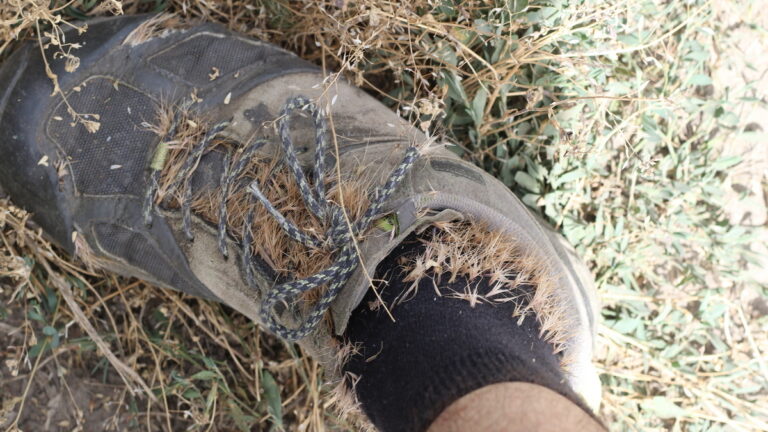Nowadays, one of the most effective seed dispersal vectors are humans. The key our efficiency is the rapidly growing rate of global transport, trade and tourism, which enables us to move more and more easily and quickly between distant biogeographical regions, and even between continents. Based on the results of studies so far, nearly 500 species have been registered to be able to spread on clothing, and most of thes are weed and invasive species that cause serious conservation problems, especially in the isolated habitats.
In a study, published in the journal Science of the Total Environment, members of the HUN-REN Centre for Ecological Research, ‘Lendület‘ Seed Ecology Research Group, analysed the potential mechanisms that might affect the outcome of seed dispersal on clothing. Their research involved 88 volunteers in a multi-site field experiment with samples collected from Hungary, Romania, and the Czech Republic. Researchers accompanied volunteers on 39 sampling occasions during fieldwork or filed trips and provided each participants a new pair of socks at the beginning of the day. At the end of the outdoor activity, they collected the seeds from socks. They also collected seeds from the inside and outside of volunteers’ shoes (a total of 251 samples and 2,008 subsamples were collected). During the experiment, they also recorded the sampling date, distance walked, and time spent outside, a list of plants to characterise the species pool of the visited site and the participants’ clothing type.
Their results show that dispersal on clothing can play an important role in seed dispersal between habitats and regions. The process allows the spread of many species: researchers have found nearly 36,000 seeds from nearly 230 plant species. Nearly half of the dispersed species were disturbance-tolerant or weed species, but there were also large numbers of species associated with natural habitats. In total, researchers observed the spread of 11 invasive and adventive species. Interestingly, most seeds were spread by men and field biologists during visits to grassland habitats. The type of clothing and footwear also had a significant effect on the dispersal efficiency: wearing long pants and high-top shoes can decrease seed dispersal potential compared to wearing short pants and low-top shoes (e.g., sneakers). Based on the result, it is crucial to inform people about this phenomenon, as our individual habits and behaviour can reduce the spread of weeds and invasive plant species.
Related links:
This research was supported by the National Talent Programme of Hungary and the Prime Minister's Office (NTP-NFTÖ-21-B-0288), and by the National Laboratory for Health Security (RRF-2.3.1-21-2022-00006), Centre for Ecological Research, Budapest, Hungary.



